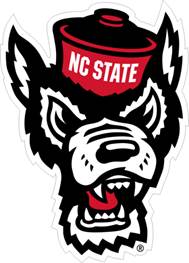Anytime we give our body a new stress/stimulus/exercise for training, we are doing so in hopes that our body will adapt to that stress and improve performance. Adaptations can include improved strength, endurance, flexibility, motor control, and kinesthetic awareness. Depending on how effective the dose is, improvements can be seen within a day, week, or month. To achieve these desired results, sufficient work in this new stress is required. This can be measured with intensity (resistance), duration (time under tension/repetitions), and frequency (number of training sessions per day or week). Proper selection and combination of these factors will help facilitate the desired adaptations and improvement in performance.
So when and why would we want progression in the given stress? There is an old saying of, “If it ain’t broke, don’t fix it.” If the prescribed dose of stress is still improving performance, don’t change it. As long as the dose does not exceed the maximum effective amount, which would most likely lead to a decrease in performance from over training and possible injury, the athlete should still keep improving. It might take longer to notice, but improvement should still occur. The goal for optimal training is to receive as much improvement in performance as possible with the least amount work. This is termed as the minimum effective dose of stress. This concept is especially important for athletes who already accumulating a large amount of stress from sport training and most likely additional strength and conditioning work. The body can only recover from so much stress so it is important not to add more than the body can tolerate.
However, over time the body will eventually adapt to the stress to the point that it will no longer provide any improvements in performance. This doesn’t necessarily mean stop as the current dose could still be maintaining current performance. If the goals for the increased performance have been met, it is perfectly fine to maintain the same dose or even see if you can wean off and still maintain performance. If additional improvement is still required (haven’t seen progress in a month) or a decrease in performance is being noticed, this is when progression is recommended.
Progression can occur in many different ways. Things to consider whenever changes in exercise prescription are made are that they reintroduce sufficient stress to cause an increase in performance and that the additional work done does not exceed the maximum effective dose to decrease chances of over training or injury. Changing one factor at a time is the most conservative way to determine whether the change reintroduces improvements in performance. Slightly increasing intensity, duration, or frequency are simple ways to increase the stress/dose. Take for example a client who was prescribed body weight walls sits for 3 sets of 20 seconds 3 times per week to increase strength and decrease pain in the knee during daily activities. If the client stopped noticing improvements in strength and/or decreased pain during daily activities for a few weeks, you could increase intensity by having them hold a 10lb plate, duration from 20 to 30 second holds, or frequency from training 3 times to 4 times per week. Monitor the new change and see if improvements start reoccurring. If the exercise itself becomes too easy and requires an enormous amount of work to induce the desired improvements, a progression in exercise selection to a more intense movement could also be warranted.
Yong Park, Sports Performance Specialist
Raleigh Orthopaedic Performance Center- Cary
About the Author:
Yong Park works at the Raleigh Orthopaedic Performance Center in Cary as a Sports Performance Specialist and works along side Sports Physical Therapist with patients. Yong has been in the strength and conditioning world working with various athletes since 2014 and in the physical therapy setting since 2016. He graduated from North Carolina State University with a bachelor’s degree in Nutrition Science and minor in Sports Science. He has trained in martial arts for over 10 years and currently trains and competes in the sport of Power lifting and Olympic Weightlifting.









